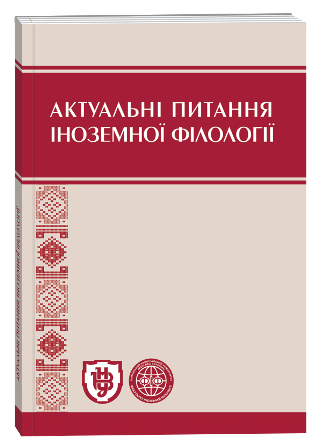SEMANTIC AMBIGUITY OF THE LEXICAL UNITS FORMED BY ADDING PREFIX AUTO- (ON THE BASIS OF THE FRENCH LANGUAGE)
Keywords:
a lexical unit, prefix auto-, derivation, semantic field, derivational productivityAbstract
Our research is dedicated to the topical problem of ambiguity in the language, in particular in the domain of word formation. Having used as basis the lexical units formed by adding prefix auto-, we have discovered consistent patterns and have set lexical-semantic fields of these lexemes. In order to define the structure of the semantic field there have been applied two kinds of infiltration (morpho-lexical and semi-lexical infiltration). The results of the analysis have demonstrated that the removal of ambiguity is possible on condition of extending the field for research, as well as studying the productivity and the motivation of the prefix. It has been found out that in both French and Ukrainian languages the groups of words with prefix auto- are homonymous. Moreover, we have discovered four meanings which the given prefix may have. On the basis of lexicographic data and having taken into account the four principal parts of speech, there has been discovered a significant increase in productivity of prefix auto- in some parts of speech and its stagnation in the other ones. There have been outlined consistent patterns of adding this prefix to certain stems. In addition to this, there have been established only two semantic meanings given by the dictionaries to the semantic field of this prefix. We can say that as a result of the conducted research we have succeeded in defining the ways to remove ambiguity of the lexical units formed by adding prefix auto-.
References
Васильев Л. М. Теория семантических полей / Л. М. Васильев // Вопросы языкознания. – 1971. – № 5. – С. 106–111.
Greimas A.-J. Sémantique structurale. Recherche de methode / A.-J. Greimas // Larousse. – Paris, 1966. – P. 72–87.
Peytard J. De l’ambiguité sémantique dans les lexies préfixées par auto- / J. Peytard // Langue française. – Vol. 4, no. 1. – Paris : Larousse, 1969. – P. 88–107.








